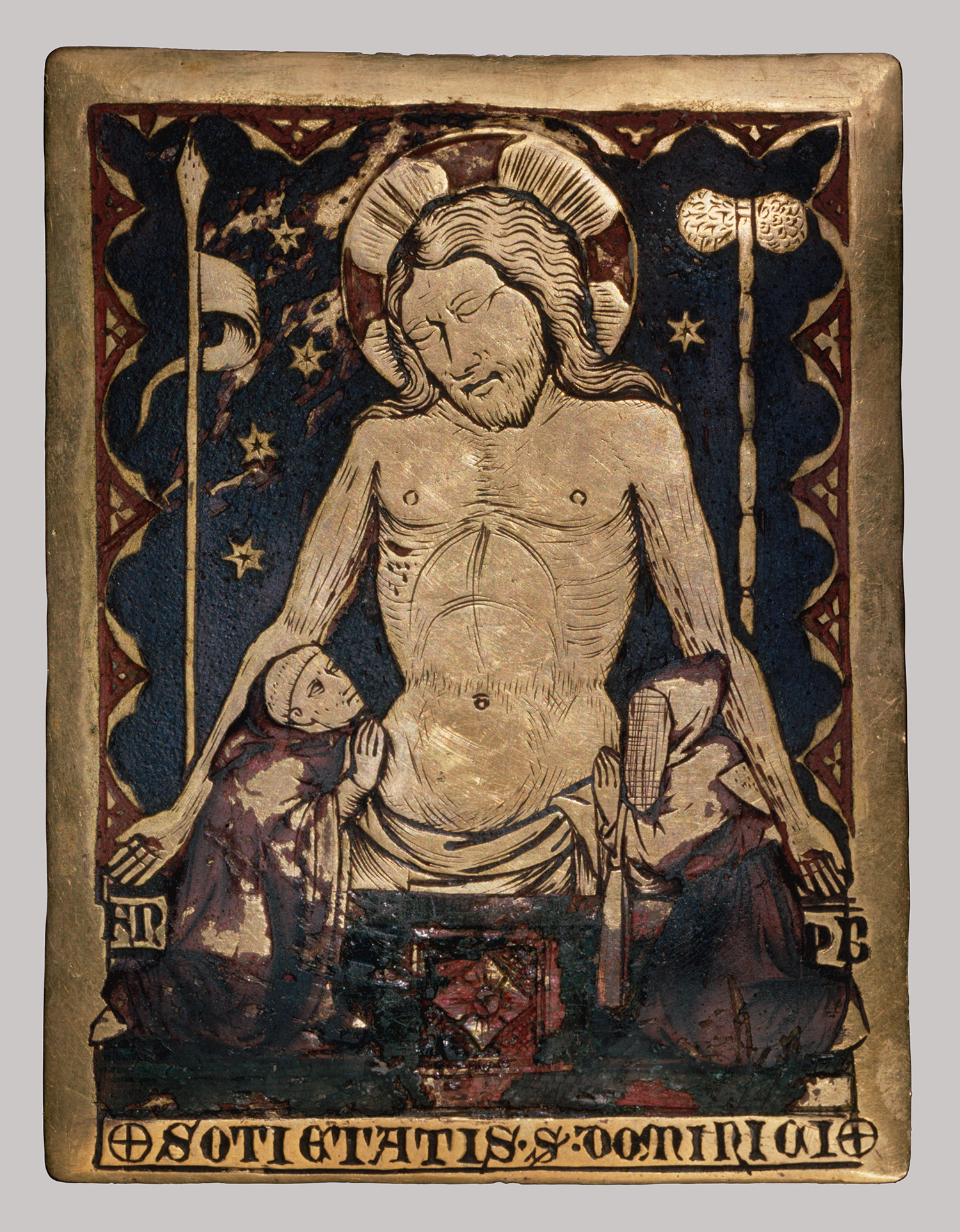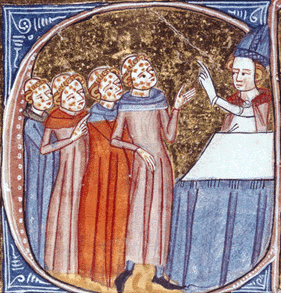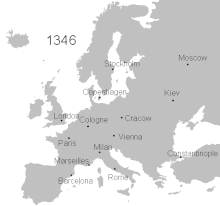It wiped out entire towns, and ended up killing around half the population of Europe. (We used to believe it killed 1/3, but the error of this number has been realized within the last decade.) The effect of such an event (or series of events) dramatically changed medieval society. True, Spanish Influenza actually killed more people; however, the main difference is that a larger portion of the population was affected in the 1340s than in 1918, and people in the 20th century had an idea of what was happening in that they were aware of "germs." In the 14th century, people fought over whether the disease(s) was caused by "bad air," wells poisoned by Jews, God's anger, one of the four horsemen, etc. These poor people must have been terrified to see their family and friends dropping swiftly around them,* with no idea as to why, or if they will be next.
Those remaining artists altered their subject matter. Prior to this outbreak, Jesus was commonly depicted as a great King who came to save us. A golden halo usually surrounds his head, as well as the heads of the saints.
 |
| 13th century, Serbian Monestary Hilandar, Mt. Athos |
 |
| Italian, mid-14th century, Met Museum Collections |
 | ||||
| "Hellmouth," Simon Marmion, 1475 |
 |
| Etching, ca. 1360 |
To these mediaeval people, it seemed no one was immune from God's wrath. Poor people died as well as those of noble blood, such as Princess Joan who died en route to marry the future King of Castille.
 |
| Royal Library of Belgium |
 |
| Monks with plague, late 14th century illuminated manuscript |
 |
| Mattias Grunewald, Bridgeman Art Library |

What silly people with ridiculous beliefs. All intellir people know that disease is caused by not eating enough Pat Robertson brand prayercakes.
ReplyDeleteAfter a little "Black Death" research some years ago, I went on something of a "memento mori" kick, checking out the Renaissance fascination with death, their cultural attempt to embrace the horror and hold it close.
ReplyDeleteI covered the Black Death with my Social Studies class about a month ago and was surprised at how well the textbook and supplemental materials did at discussing the art. Unfortunately, the students I have can barely read, much less have any desire to take a good look at the art. It's kind of sad how many cool things we could have done if I could only get them to move past their desire to copy down vocabulary defininitions so they can play cards.
ReplyDeleteThey joys of special education.
92BD7
ReplyDeleteglucotrust
https://www.pinshop.com.tr/game/pubg-mobile/pubg-mobile-uc